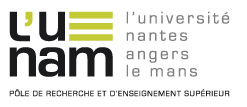The Nestle-Aland Critical Apparatus and Its Application to Old Latin Manuscripts: A Case Study of the Emmaus Pericope
La question de l’apparat critique du Nestle-Aland dans le témoignage des manuscrits de la Vieille-Latine : l’exemple des Pèlerins d’Emmaüs
Résumé
The Old Latin manuscripts are among the most fascinating early witnesses of the New Testament, due to their antiquity: they predate the Vulgate and are contemporaneous with the first translations into other languages like Syriac and Coptic. However, critical apparatuses often classify them 'as a whole,' preventing us from seeing the contribution of each manuscript and, consequently, its role as a marker in the transmission of the New Testament text. This article aims to study the pericope of the Emmaus Pilgrims (Luke 24:13-35) in various Old Latin manuscripts. While the Greek text attests to two distinct forms, that of the 'Western' text and that of the Alexandrian text, the testimony of the Old Latin manuscripts, based on a meticulous study of their variants, seems to trace this evolution. Far from using the classic and general criteria—'Western' or 'mixed Vulgate'—usually attributed to the Old Latin, this article seeks to show that the variants in these manuscripts occur precisely at the points of tension between the 'Western' and Alexandrian texts, and to highlight their evolution in this unique passage of Luke, which supports the suggestion of earlier studies regarding the primitive nature of this pericope as transmitted by the 'Western' text.
Les manuscrits de la Vieille-Latine font partie des premiers témoins les plus intéressants du Nouveau Testament, du fait de leur ancienneté : antérieurs à la Vulgate, ils sont contemporains des premières traductions dans d’autres langues comme le syriaque et le copte. Cependant, les apparats critiques les classent souvent « en bloc », empêchant ainsi de voir l’apport de chaque manuscrit et, par là même, son rôle de traceur dans la transmission du texte néotestamentaire. Cet article se propose d’étudier la péricope des Pèlerins d’Emmaüs (Lc 24,13-35) dans divers manuscrits de la Vieille-Latine. Alors que le texte grec en atteste deux états bien distincts, celui du texte « occidental » et celui du texte alexandrin, le témoignage des manuscrits vieux-latins semble, d’après une étude minutieuse de leurs variantes, retracer cette évolution. Loin d’utiliser les critères classiques et généraux, – de caractère « occidental » ou « mixte vulgate » –, généralement attribués à la Vieille-Latine, le présent article souhaite montrer que les variantes de ces manuscrits interviennent aux endroits mêmes des tensions entre texte « occidental » et texte alexandrin, et souligner leur évolution dans ce passage exclusif de Luc ; ce qui conforte la suggestion des études antérieures quant au caractère primitif de cette péricope, telle que la transmet le texte « occidental » .
Rękopisy Starej Łaciny należą do najbardziej fascynujących wczesnych świadków Nowego Testamentu ze względu na ich starożytność: są wcześniejsze niż Wulgata i powstały w tym samym okresie co pierwsze tłumaczenia na inne języki, takie jak syryjski i koptyjski. Jednak aparaty krytyczne często klasyfikują je 'w całości,' co uniemożliwia dostrzeżenie wkładu każdego rękopisu, a tym samym jego roli jako wskaźnika w przekazywaniu tekstu nowotestamentowego. Artykuł ten ma na celu zbadanie perykopy Uczniów z Emaus (Łk 24,13-35) w różnych rękopisach Starej Łaciny. Chociaż tekst grecki potwierdza istnienie dwóch wyraźnych form: tekstu 'zachodniego' i tekstu aleksandryjskiego, świadectwa rękopisów starej łaciny, na podstawie szczegółowego badania ich wariantów, wydają się odzwierciedlać tę ewolucję. Zamiast korzystać z klasycznych i ogólnych kryteriów – 'zachodnich' lub 'mieszanych Wulgaty' – zwykle przypisywanych Starej Łacinie, artykuł ten ma na celu wykazanie, że warianty tych rękopisów występują dokładnie w miejscach napięcia między tekstem 'zachodnim' a tekstem aleksandryjskim, i podkreślenie ich ewolucji w tym wyjątkowym fragmencie Łukasza, co potwierdza sugestię wcześniejszych badań dotyczącą pierwotnego charakteru tej perykopy, tak jak ją przekazuje tekst 'zachodni'
Domaines
Religions
Fichier principal
 _L.+Pinchard,+La+question+de+l’apparat+critique+du+Nestle-Aland+dans+le+témoignage+des+mss+de+la+Vieille+Latine.pdf (813.74 Ko)
Télécharger le fichier
_L.+Pinchard,+La+question+de+l’apparat+critique+du+Nestle-Aland+dans+le+témoignage+des+mss+de+la+Vieille+Latine.pdf (813.74 Ko)
Télécharger le fichier
| Origine | Fichiers produits par l'(les) auteur(s) |
|---|---|
| licence |





